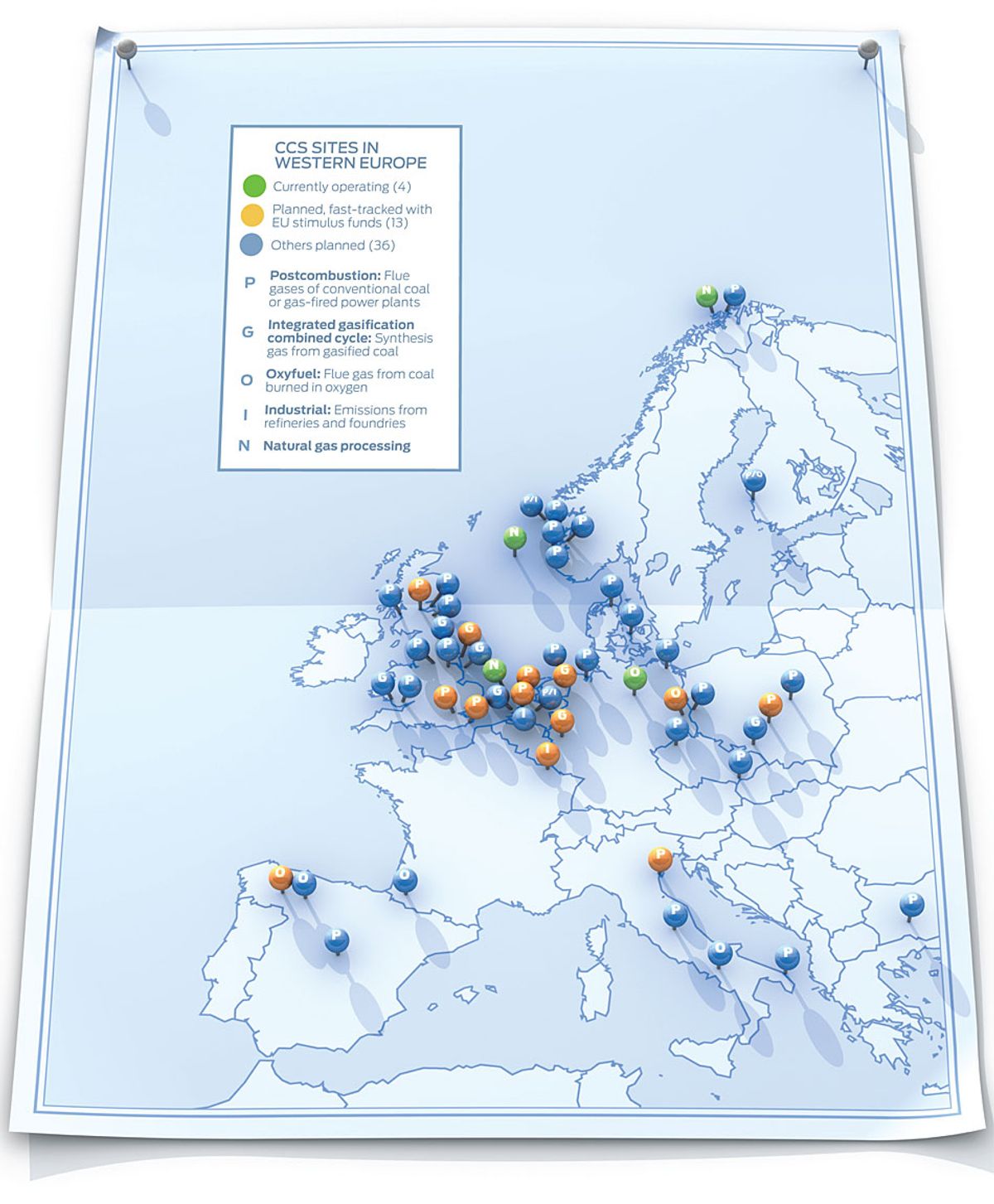Sources: European Commission; Scottish Centre for Carbon Storage, University of Edinburgh, https://www.geos.ed.ac.uk/ccsmap; StatoilHydro; Intergovernmental Panel on Climate Change.
Illustration: Bryan Christie Design
CCS Sites in Western Europe
Click on the image for a larger view.
Carbon capture and storage (CCS) made its world debut in Northern Europe in 1996, when Norway’s state-owned oil and gas company started burying carbon dioxide that had been stripped out of natural gas at its Sleipner West offshore field. Rather than venting the CO 2 —and paying Norway’s punishing US $50 per metric ton carbon tax—the firm pumped it into a saline aquifer 1 kilometer below the seabed. Sleipner has sequestered over 11 million metric tons of CO 2. Extensive testing says that the gas is staying put.
Success at Sleipner and at several smaller projects has sparked the interest of Norway’s meganeighbor to the south, the 27-member European Union, which has a goal of cutting greenhouse-gas emissions 80 percent from 1990 levels by 2050. Utilities and a few industrial firms propose to incorporate CCS into dozens of projects—primarily coal-fired power stations, which generate nearly a quarter of the EU’s CO 2 emissions. This spring EU leaders short-listed 13 projects to share € 1.05 billion ($1.46 billion) in economic stimulus funds. Each proposes to capture at least 85 percent of its CO 2 and would test one of several technologies.
CCS is no panacea. According to European Commission projections, by 2020 the process will still cost operators of coal-fired power plants more than carbon allowances that would let them release CO 2 into the atmosphere (even at a projected permit price as high as € 41 per metric ton). Thus the EC expects power firms to sequester only 7 million metric tons per year in 2020—less than 1 percent of the CO2 they currently generate.
The EU must also convince a wary public that buried CO2 will stay buried for good, protecting the densely populated communities above it.
5 August 2009: Edited to note that Schwarze Pumpe is not quite yet putting its carbon dioxide in the ground. See Schwarze Pumpe Hits a Bump" for more information.

